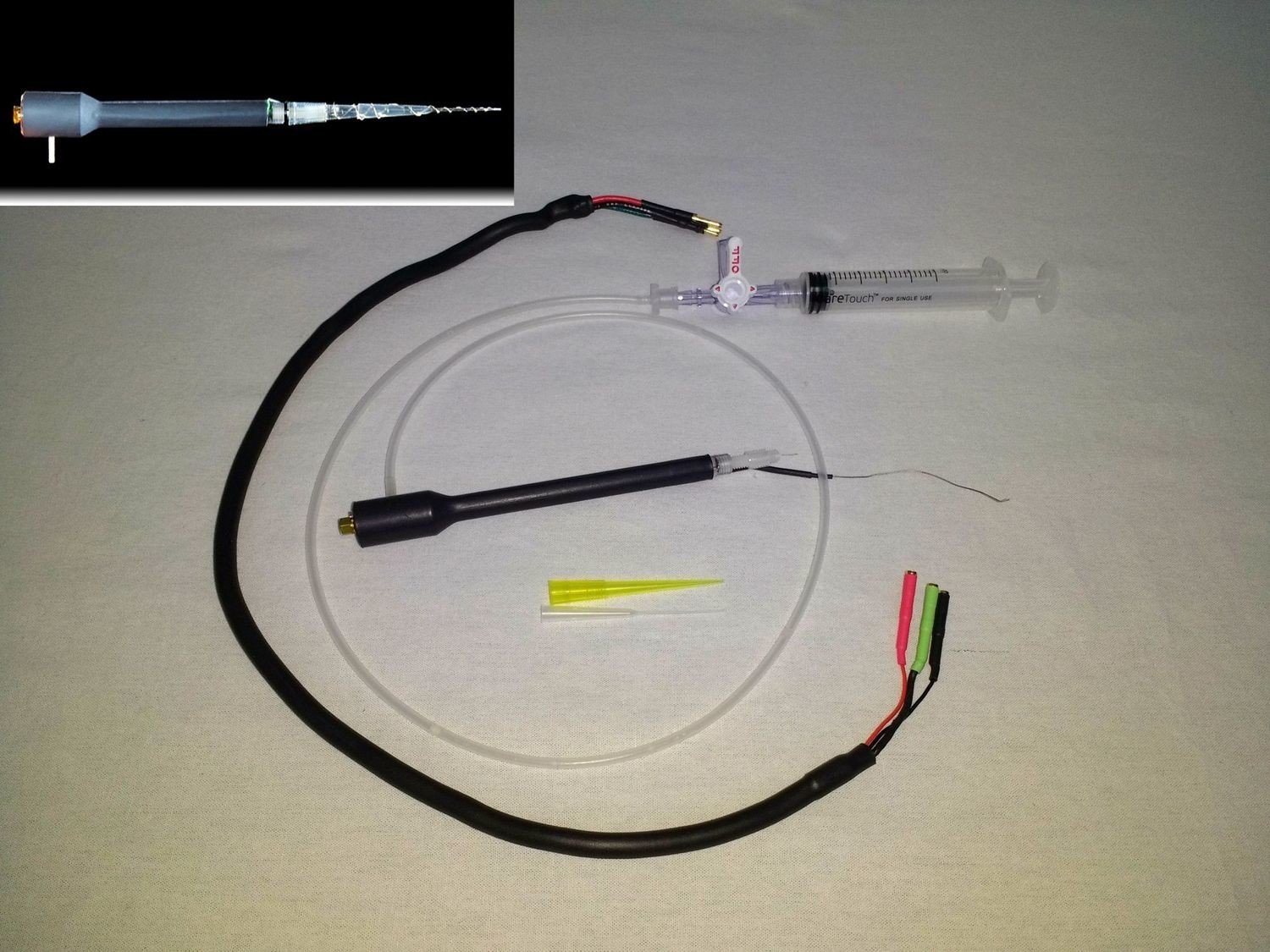
Bipolar Shielded Suction Electrode with cable for connecting to the iWire-B3G
Bipolar Shielded Suction Electrode
Applying a negative pressure to the inner cavity of the suction electrode via the small side port draws the tissue to be recorded from, or stimulated, next to or into the end of the suction electrode (either via a short glass capillary pipette, a disposable pipettor tip, or a short section of tubing). The inner cavity also contains a silver wire connected to a jack on the rear of the electrode. Outside of the cavity is a short segment of wire that can be utilized as the reference electrode, or a silversilver chloride pellet with wire lead can be soldered to the suction electrode’s reference wire to complete the circuit. The suction electrode is offered with either a conductive EMI shield coating, or with a separate ground wire, depending on your preference.
With the suction electrode, it is easy to record extracellularly from very small hearts, insects, intestinal nerves, as well as stimulate muscle tissue. If the glass capillary is removed and replaced by some small diameter tubing, it is possible to record from tissues or animals while they move by contracting, expanding, or changing position. Instructions are also included on how to record using a common disposable pipettor tips, thereby eliminating the need and cost involved when using pulled glass pipettes.
Accessories packaged with each electrode include a cable for connecting to the iWire-Bxx recorders , a short section of tubing allowing for easy connection to a luer suction source, syringe, 3-way stop-cock and several disposable pipette tips that make recording by students simple.
